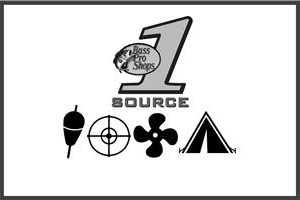
 Don’t get all upset when I say “Document your catch.” I don’t mean for you to keep a fishing diary or journal where you document every detail of your fishing trips. I don’t even mean for you to document all your catches — just when you catch a nice bass. Five pounds or more is what I call a nice catch.
Don’t get all upset when I say “Document your catch.” I don’t mean for you to keep a fishing diary or journal where you document every detail of your fishing trips. I don’t even mean for you to document all your catches — just when you catch a nice bass. Five pounds or more is what I call a nice catch.
Some journals out there for sale ask for every detail: where, lure, color, line test, temperature, wind, sun, what you had for breakfast. You get the picture. The problem is that while all this information could be pertinent, after a while, the angler gets tired of all the details and spending time doing that when he could be doing something important, like watching a football game or cooking ribs. Important stuff! So, keep it simple. Here’s how:
Every fishing trip is not worth documenting, so just keep records of the ones that really were good. Maybe you caught a big stringer, or just a big, big bass. And say you catch a seven pounder — maybe two in the same day. If you don’t frequent that lake often, then don’t bother. The whole idea is that your records should, over time, show a pattern as to where bass feed and can be caught consistently. Catching two big bass on a lake you only go to three or four times a year is not worth the effort. But if you fish a particular lake several times a month, now that is one to keep track of when you have a good catch.
Let me give you a good example: A buddy of mine who lives in Texas used to fish a small lake outside of Fort Worth called Sunshine Lake. Not a big lake, about 75 acres. It was matted over with coontail moss and neglected to a certain degree, but the city there built a nice concrete boat ramp, picnic areas, a meeting building for family gatherings, a fishing dock … just really nice, but nobody went there because it had been abandoned years ago and folks felt it was fished out. There had been a coyote problem at one time, and cyanide bombs had been placed out in the surrounding woods. Folks were scared because of that. Then, there was a prolific snake population.
But there was also a prolific largemouth bass population! My buddy discovered this one day when he went out there to try out a new reel. In that process, he caught several large bass over six pounds. This became one of his favorite places to fish!
So, as time went by, he kept a record. Not a bunch of log details, but a simple map of the lake with key features, channels, creeks and depths. Every time he caught a good-size bass, he would mark it on the map with a green dot. If he caught one over 10 pounds, he put a red dot. No dates or boring details … just where he caught the fish.
Over time, a pattern developed. On the north end of the lake, three creeks emptied into the lake; where those creeks come together is one of the deepest points in the lake, and the north bank is covered in fallen timber and cattails. The number of green dots were numerous in this area. The main channel went right up the middle of the lake and off to the west. Along this channel were the most red dots. Isolated cover away from the competition were the hangouts for the big, big bass. Random dots appeared here and there, but he soon figured it out that all he had to do was ease out to the channels’ merging area, and fish his pea-picking heart out.
Later on, he added a blue dot for catfish. The lake had some whoppers in it.
Sunshine Lake became his favorite lake to fish. It was quiet with very few other anglers on the lake; plus, it was maintained by the city’s park commission. This lake was 15 miles out of town. Basically deserted. Wow. And loaded with bass.
To start your map, take the time to turn on your locator and record depths, channel locations, humps, underwater islands and cover such as timber and weed beds. Draw your outline of the lake’s shoreline shape. Make a few copies and have them laminated. If you have a banker friend or lawyer buddy, you can get them to laminate them. Or take your maps to Office Depot.
Get some colorful markers and put all this in a plastic bag in your boat. Mark the catches as they happen. Transfer your data to a “master” map that you keep at home, just in case you get the boat copy all messed up. My buddy kept four maps of lakes he fishes all the time. He seldom has days where he caught nothing, but he has many days that he catches a big lunker or two.
The principle behind all this is that bass can be caught continually in the same area from year to year on similar baits. The bait depends on the forage in the lake at the time. But usually, we are talking about frogs, bream, shad, grasshoppers and crawfish. How hard can it be?
Good fishing,
Jimmy
(P.S. Send me copies of all your maps! Ha ha!)
by Jimmy Houston
- 3592 views

